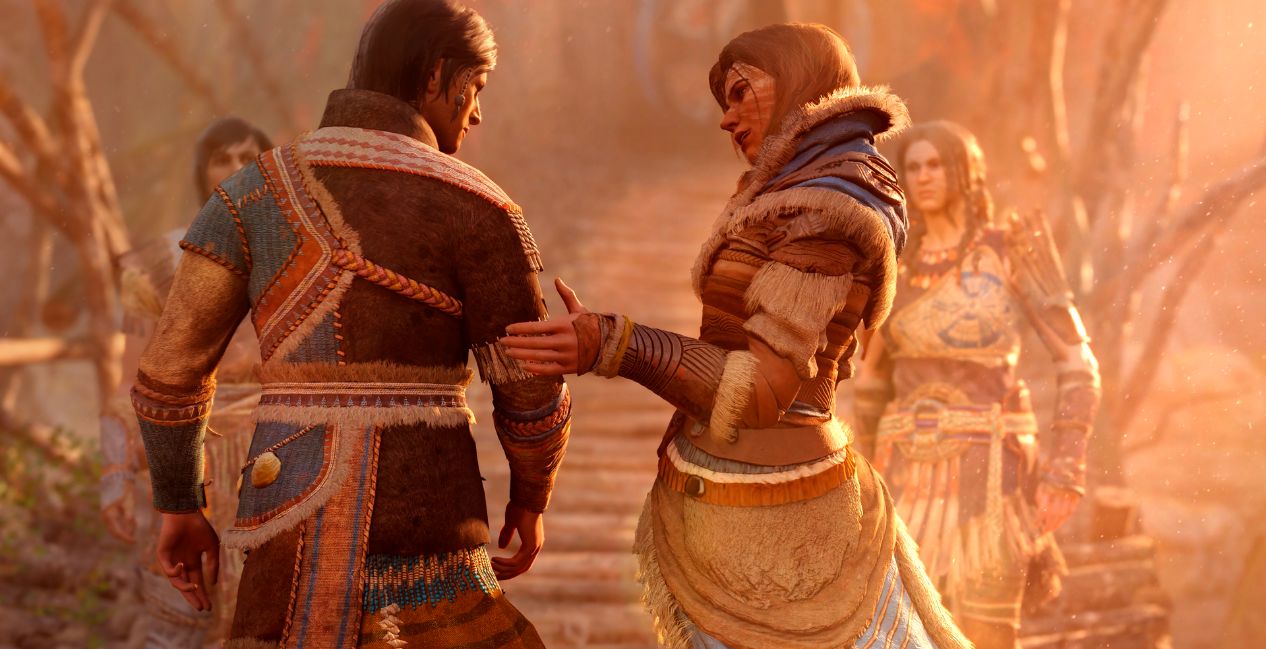When the colonizers came to your island, they brought their machines, guns, and ruin in their wake. Now, they have kidnapped you and your brother, taking you back to their homeland. Strangers in a strange land, Greedfall II: The Dying World, a fantasy RPG developed by Spiders and published by Nacon, tasks the player with fighting and talking their way out of the difficult situations it places before them.
RPGs demand a bit of everything to be good. Engaging combat, a fully realized world to explore, customizable leveling systems, and characters that players can invest in must all come together to provide a smooth experience that keeps the game’s fans wanting more. Through the opening sections that are available with the early access release, Greedfall II: The Dying World manages to get one of these right, while the others don’t land as well. Let’s start with the game’s biggest strength: its combat.
RPGs have always lived with a sizable divide in their player base. Some players look for turn-based combat, while others prefer real-time action mechanics. Rather than force players to choose, the developers at Spiders have done their best to craft a combat system that can appeal to everyone.
The core combat mechanics at work here will be familiar. The player controls a party of heroes during battles. Characters can do basic attacks and unleash special skills that require skill points to spend and operate on a cooldown. Skill points are replenished by doing basic attacks. Greedfall II: The Dying World‘s combat stands out because it allows players to control as little or as much as they want at their desired speed.
By default, the player’s party will do basic attacks automatically while waiting for the player to assign special actions like skills or using items. Now, players who don’t want to manage their party as much can make the party members they aren’t directly controlling function autonomously. This frees them to use their skills as they see fit.
Another way the game lets players control the flow of battle is by letting them control how quickly events play out. Combat is, by default, real-time, but with the push of a button, the player can enter tactical view, which pauses the scenario. This allows the player to take their time, plot out orders, and assign up to three commands to each character before letting things play out.

I enjoyed this level of freedom of choice. While I expected to always go into tactical mode, I used it less. Once I had my feet under me, casual encounters were opened with a moment of planning, but after that, I could keep up with clicking in real time. The mouse detection was a little iffy at times, which could make targeting tough, but hopefully, that’s just an early access issue.
Fueling Greedfall II: The Dying World‘s combat is a solid leveling system. Each character opens with access to a pair of skill trees that give some customization options. While each character feels different, there isn’t much variety within an individual’s skill trees. The one exception to this is the player character.
While everyone else in the party is limited to two fixed skill trees, the player can choose two initially. Several pairings are recommended, but players can craft their hero freely, selecting any pair they want to start with.
Along with skills, players will also level up their party’s attributes. These represent standard RPG mainstays like strength, endurance, and agility. While players can level up their party however they like, there are generally three stats each member will put points into. One for their attack, one for their skill points, and one to raise hit points. Otherwise, the remaining attributes have no real draw. It would’ve been nice if the system encouraged more mixing. However, as it is, this keeps it simple for more casual players.
The player’s character has access to talents along with the previous characteristics. These determine the player’s chance to do out-of-combat actions like picking locks, manipulating conversations, and repairing objects. These points are fairly rare, so players will want to make every one of them count.
On the topic of interacting with objects outside of combat, let’s talk about exploration. Finding your way around Greedfall II: The Dying World‘s intricate area maps can be a bit frustrating. Paths frequently feel unnecessarily winding, making it difficult for players to tell if they are heading in the right direction. While every path shouldn’t be a straight line to the objective, this game seems to delight in making every trek take as long as humanly possible.
Adding to this frustration is a design decision with a mini-map I’ve never seen before, and I hope I never see again. The mini-map looks crafted from a top-down photo of the terrain as the player sees it. Many elements can trick the player into thinking paths do or don’t exist. A light path that looks like a narrow passage may just be rocks of the same color at two different altitudes. What looks like a dead end may be the dark shadows of a structure creating the appearance of an end. This inability to trust the map leads the player to do a lot of extra double-checking when searching for where to go next.

Greedfall II: The Dying World helps players search for items of interest with a useful tracking sense. Turning on the sense turns the world back and white, with interactive objects or items to pick up bathed in gold light. The only thing that makes this feature less than optimal is that it doesn’t highlight enemies. If one blends into the background, this can cause you to get caught off guard.
The areas I got to explore were visually well-designed. Each locale exhibited a strong visual presence, from lush forests to underground sewers. There was a solid variety of flora to keep outdoor paths looking interesting, and urban area structures looked great, displaying style and craftsmanship that felt right for the setting.
If I had to use one word to describe the part of the story I got to play, it would be “direct.” The bad guys are very bad, and the good guys stand up to them. There are few shades of grey or middle ground. Although, when the villains are perpetrating acts of slavery and kidnapping, it doesn’t leave the narrative much room to play with. This black-and-white conflict is fine; it just doesn’t leave much room for nuance.
One thing that helps players connect more with individual plot points is how the game gives them several choices on how to overcome obstacles. Whether a player chooses violence, diplomacy, or stealth can alter how a moment plays out.
While the larger story leaves little wiggle room for subtlety, the characters that make up your party feel well-fleshed out. Each has notable quirks that make them memorable within the party dynamic. This is helped by having some conversations the player initiates with allies joined by other party members, rather than solely being one-on-ones like in many games. Seeing the group interact helps broaden the player’s understanding of their allies faster.
The final element we have to discuss is bugs. As an early access title, some hiccups are to be expected. However, this game is technically in very rough shape. I suffered several different crashes while playing, along with numerous other hiccups. These issues ranged from being unable to climb ladders until I reloaded to enemies being non-interactive when I approached. It was a lot, but nothing kept me from ultimately moving forward in my playthrough.
Greedfall II: The Dying World delivers a fun and engaging combat system that grants the player an impressive amount of control over how combats play out. Aside from this strength, though, there isn’t much to make this game recommendable, even if it was a final build. With other fantasy RPGs on the horizon, I struggle to find a strong argument for investing in this one.
Greedfall II: The Dying World is available now for early access on Steam.








